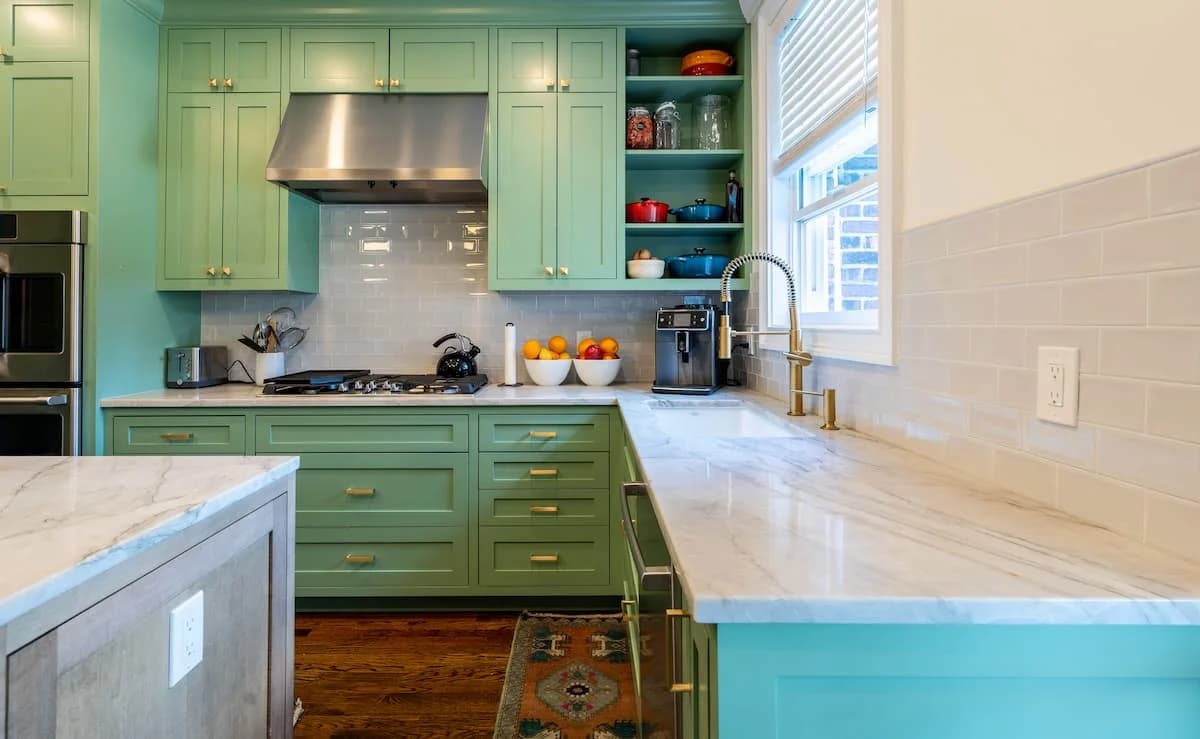Often confused with each other, quartz and quartzite are actually different from one another. Both quartz and quartzite have many areas of use and unique properties. However, what is shared by both of them is that the two are outstanding interior design elements but for different reasons.
Keep reading to explore the characteristics of quartz and quartzite and discover the reasons that make them essentially different from one another. This way, you will be able to make an informed decision when choosing between the two.
Table of Contents
ToggleWhat is Quartz? Understanding its Composition and Characteristics
Quartz is a silicate mineral composed of silicon and oxygen. It is known as one of the most abundant minerals found on Earth. While naturally found as just the mineral itself, it can also be present in all three rock classes that are sedimentary, igneous, and metamorphic.
Although quartz is white in its purest form, different impurities can let quartz be in many different colors, like pink, purple, yellow, red, blue, orange, green, gray, black, and more.
Relatively, as a mineral, quartz is hard and has a Moh’s scale hardness of 7 out of 10. Besides, it is resistant to chemicals and can form at all temperatures, which is why it can be found in seas, desert sands, beaches, and mountaintops. The world’s primary quartz producers are China, Japan, and Russia.
Quartz has many areas of use, including gemstones, glass making, abrasive, interior design, and more.
What is Quartzite? Unveiling the Nature of Quartzite
Quartzite is a naturally occurring metamorphic rock composed almost entirely of quartz. It is formed under great heat and pressure and the chemical activity of metamorphism.
Quartzite is a hard and durable rock, coming generally in white or gray colors. However, some quartzite slabs can also have pink, red, purple, yellow, green, blue, brown, and orange hues.
Having a diversity of uses, quartzite finds its place in architecture, decorative arts, construction, manufacturing, and more. Besides, quartzite is an incredibly tough material with a Moh’s hardness of 7 out of 10. The United States, Canada, Ireland, and the United Kingdom are some places where quartzite can be found.
Quartz vs. Quartzite: Key Differences in Composition
Both quartz and quartzite are incredible materials; however, they are essentially different from one another in composition.
While quartzite slabs are natural – naturally formed under great heat and pressure, quartz slabs are manufactured – produced by crushed quartz crystals, resins, and other pigments. This significant difference in composition is also the reason for some other key differences.
For instance, quartzite slabs generally come in white or gray colors; quartz slabs, on the other hand, are available in any color and design, thanks to their manufacturing process.
Another difference between the two materials is that quartzite has a porous surface as a natural stone, requiring sealing to protect it from stains, bacterial growth, discoloration, and more. However, as a manufactured stone, quartz has a non-porous surface, considered a low-maintenance countertop material.
Regarding resistance, quartzite shines out because of its heat and UV resistance. Since quartzite is naturally formed under extreme heat and pressure, it can perfectly resist heat and direct sunlight while preserving its natural beauty. However, resins and pigments used to produce quartz slabs make them vulnerable to heat and sunlight.
Durability Showdown: How Do Quartz and Quartzite Compare?
Quartzite is even harder than granite – which is known as one of the most durable stones. Quartzite can handle heavy use quite perfectly, thanks to its hardness and strength. As mentioned earlier, quartzite is also a highly resistant stone; heat and UV lights will not be a problem for quartzite, making the stone also an ideal choice for outdoor use. However, it should be noted that since it is a natural stone, there is the risk of chipping and denting for quartzite. Plus, regular sealing is a must for quartzite to preserve its strength and beauty.
Honestly, strength is not the first thing that comes to mind when talking about quartz. It is suitable for neither heavy nor outdoor use. Moreover, it is not possible to speak of heat and UV resistance for quartz because of the pigments contained in it. Still, it is quite resistant to stains, scratches, and bacterial growth, even though it does not require any maintenance routine. Plus, compared to quartzite, quartz is less prone to chipping and denting because of its being more flexible.

Color and Pattern Variations: Exploring Aesthetics of Quartz and Quartzite
Quartzite’s appearance is a representation of nature’s elegance. Quartzite resembles marble – known for its luxurious beauty. Although quartzite’s color range is limited to whites, creams, grays, and sometimes blues, its mesmerizing patterns and veinings add a unique persona to any design in which it is used. This is because the mineral impurities of quartzite give peerless hues and colors to the stone. Quartzite is undoubtedly an incredible choice for those who love the idea of having a touch of nature in their designs.
Quartz, on the other hand, can come in any color and pattern, thanks to its manufacturing process. Hence, quartz is highly customizable and can be suitable for any design approach. Besides, quartz can mimic the look of any natural stone, while it requires no maintenance like the others.
Practical Applications: Where to Use Quartz and Quartzite in Your Home
Both quartz and quartzite have many areas of application. Regarding interior design, quartzite can be utilized as kitchen countertops, kitchen backsplashes, bathroom vanities, flooring and staircases, feature walls, fireplace surrounds, shower and tub surrounds, etc. Since quartzite is relatively more water-resistant than many other natural stones, it is ideal for places that get wet easily. However, this is the case as long as quartzite is adequately maintained.
Quartz is versatile and can be used in many ways in interior design. The most ideal areas of applications for quartz are kitchen countertops, kitchen backsplashes, flooring, bathroom vanities and surrounds, and more. Keep in mind that quartz should not be used in places where it can be exposed to heat, as it is not a heat-resistant material. Still, it is a durable and low-maintenance material, making it a great choice in many ways.
Now that you know all the essentials about quartz and quartzite, you can make an informed decision between the two. As Bergen Marble and Granite, we provide rich collections of the finest quality quartz and quartzite slabs. Reach out and let us identify the perfect choice suitable for your design project together!


